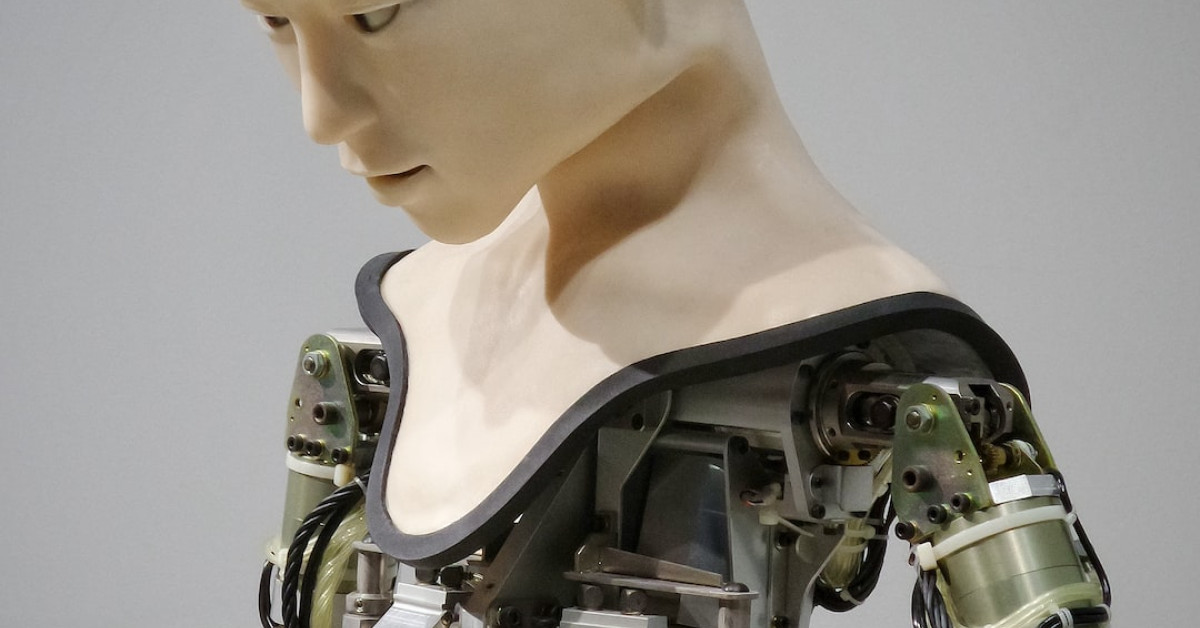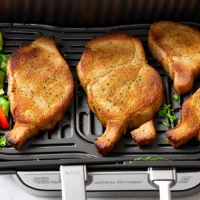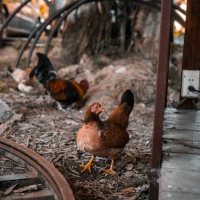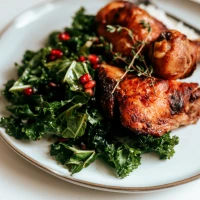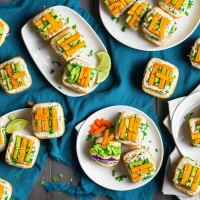When it comes to creating unforgettable culinary experiences, the mastery of cooking the perfect scallop is indispensable. This delicate seafood, when done right, can elevate the humblest of vegetables to gourmet status. As a healthy and versatile favorite, vegetables are in themselves integral to a varied diet, but pairing them with a perfectly cooked scallop transforms them into a delightful feast. The key to achieving this harmonious blend lies in the precise science of reaching the perfect scallop internal temp.
The Art of Cooking Scallops
Scallops are a delicacy appreciated by seafood connoisseurs worldwide. Their buttery texture and subtle sweetness make them an excellent partner for a wide array of vegetable dishes. Whether they are pan-seared, grilled, or baked, the secret to the ultimate succulence is all in the internal temperature.
Understanding Scallop Varieties
Before delving into temperature specifics, it’s important to note that scallops come in various sizes, which will affect cooking time. The two common types are:
- Bay scallops: smaller, sweeter, and more delicate, ideal for quick cooking methods.
- Sea scallops: larger and more robust, perfect for searing to achieve a golden crust.
The Significance of the Right Temp
For scallops, the magic scallop internal temp sits between 125°F to 130°F (51°C to 54°C). At this temperature, they attain a perfectly opaque center and a melt-in-your-mouth tenderness. Overshooting this temperature, even by a little, can result in tough, rubbery scallops that would undermine the entire dish.
Consistency Is Key
When cooking scallops, consistency across the batch is crucial. Ensure that each scallop achieves the same level of doneness by:
- Using a reliable meat thermometer to check internal temperatures.
- Cooking scallops of uniform size to promote even cooking.
- Preheating the cooking surface properly to avoid any drastic temperature changes.
The Ideal Pairing: Scallops and Veggies
The mild, sweet flavor of scallops complements an array of vegetables, from leafy greens to hearty root types. The nutritional value of vegetables, paired with the high-protein, low-fat profile of scallops, aligns with health-conscious and gourmet dining trends alike.
Seasonal Vegetables to Accompany Scallops
To decide on which vegetables to partner with your scallops, consider what’s in season:
- Spring: Asparagus, peas, and leeks are fresh picks that pair well with scallops.
- Summer: Zucchini, corn, and bell peppers add color and crunch.
- Fall: Brussels sprouts and butternut squash offer a robust backdrop.
- Winter: Root vegetables like carrots, parsnips, and turnips provide a hearty base for scallop dishes.
Vegetable Prep Tips
- Keep it simple: Let the scallops shine by not overwhelming the dish with too many flavors.
- Balance textures: A mix of crispy, roasted vegetables with succulent scallops creates a satisfying contrast.
- Consider cooking methods: Roasting or grilling vegetables alongside scallops can save time and blend flavors beautifully.
Mastering the Cooking Process
Securing the perfect consistency and internal temperature of scallops relies upon mastering the cooking process. Here’s how to reheat cornbread to ensure your scallops don’t fall short of perfection, becoming the definite veggie’s companion.
Preparing Scallops for Cooking
Thorough preparation simplifies achieving the perfect scallop internal temp:
- Pat the scallops dry to ensure proper searing.
- Season them lightly to complement their natural taste.
- Let them reach room temperature before cooking to prevent uneven cooking.
Pan-Searing Scallops to Perfection
Pan-searing is an excellent method to achieve that desirable golden crust:
- Heat a non-stick skillet over medium-high heat with a touch of oil.
- Once hot, place scallops in the pan, ensuring they are not touching.
- Sear the scallops for about 1.5 to 2 minutes per side, or until the internal temp is ideal.
Grilling for a Smoky Flavor
Grilled scallops add a smoky layer to your vegetable combination:
- Preheat your grill to a high temperature.
- Brush the scallops with olive oil to prevent sticking.
- Grill for just a few minutes per side, verifying the temperature frequently.
Finishing in the Oven
For larger scallops or for a hands-off approach, finishing them in the oven is a great strategy:
- Preheat the oven to a moderate temperature of 375°F (190°C).
- Sear the scallops on one side, then transfer to the oven to finish cooking.
Remember, whether on the stove, grill, or in the oven, always use a meat thermometer to check for an internal temperature that’s just right.
Serving and Presentation
The final step is combining your vegetable side with the impeccably cooked scallops in a way that showcases both elements beautifully. Here are some presentation tips:
- Use bold or brightly colored vegetables to create an appealing visual contrast.
- Drizzle with a light sauce or a squeeze of lemon to meld flavors without overpowering.
- Serve promptly to maintain the desired scallop internal temp and vegetable texture.
Plating Techniques
- Arrange the scallops atop a vegetable base to create height on the plate.
- Utilize edible garnishes like microgreens or fresh herbs for added elegance and freshness.
- Employing minimalistic plating can underscore the scallop as the star of the dish.
The Role of Seasoning and Sauces
The beauty of scallops and vegetables is how well they accept a variety of seasoning profiles and sauces.
Selecting the Right Seasonings
Keep it simple with salt and pepper or add complexity with combinations like:
- Garlic and lemon zest
- Herbs like tarragon, thyme, or parsley
- Understated spice mixes that won’t overwhelm the scallop’s flavor
Crafting Complementary Sauces
A light sauce can unify the scallop and vegetable elements. Here are a few sauce suggestions:
- Lemon butter sauce
- White wine reduction
- Herbed oil infusion
Balancing Flavors
Acknowledge the vegetable’s profile in choosing a sauce or seasoning. For instance, a balsamic glaze could complement roasted Brussels sprouts but may clash with delicate greens.
Storing and Reheating
Though best served fresh, if you find yourself with leftovers, storing and reheating them properly can save the dish.
Tips for Optimal Storage
- Cool the scallops and veggies quickly to prevent bacterial growth.
- Store in an airtight container to maintain freshness.
- Refrigerate promptly and consume within one to two days.
Reheating without Compromising Quality
- Opt for a gentle reheating method like a low-temp oven.
- Avoid microwaving, as it can unevenly heat and ruin the texture of scallops.
- Adding a splash of water or broth can help to keep the vegetables moist.
Nutrition and Health Benefits
Combining scallops with vegetables yields dishes that are not only delicious but also brimming with nutritional value.
The Nutritional Power of Scallops
Scallops are:
- Rich in protein and omega-3 fatty acids
- Low in calories and carbs
- A good source of minerals like magnesium and potassium
Why Veggies Are Essential
Vegetables complement scallops by providing:
- Essential vitamins and fiber
- Antioxidants for cellular health
- A low-calorie bulk to satiate and maintain a healthy diet
Dietary Considerations
Incorporating scallops and vegetables into your diet can support weight loss and heart health. However, those with seafood allergies must avoid scallops, while others may need to mind portion sizes due to seafood’s high cholesterol content.
Pairing Wine with Scallops and Vegetables
Selecting the right wine can turn a simple meal of scallops and vegetables into a culinary event.
Crisp Whites for a Refreshing Balance
- Sauvignon Blanc
- Pinot Grigio
- Chablis
Matching Wine with Cooked Vegetables
The caramelized notes from roasted vegetables can handle richer whites or even light reds like Pinot Noir.
Temperature and Serving
Serve white wines chilled, at around 50°F-60°F (10°C-15°C) for optimum enjoyment.
Final Thoughts: The Culinary Symphony of Scallops and Vegetables
Cooking scallops to their perfect internal temperature and pairing them with vegetables is an art that leads to satisfying, nutrition-packed meals. A meal featuring scallops and vegetables can be a simple weeknight dinner or the centerpiece of a sophisticated gathering. Either way, understanding the finer points of scallop cooking and vegetable pairing can make every bite a celebration of flavor, texture, and nutrition.
From mastering the scallop internal temp to choosing the ideal veggie accents and the right wine, each step is vital to creating a dish that delights the palate and elevates the everyday. Embracing this guide will ensure you achieve perfectly cooked scallops, the ultimate partner to an array of vegetables, every time you step into the kitchen.
